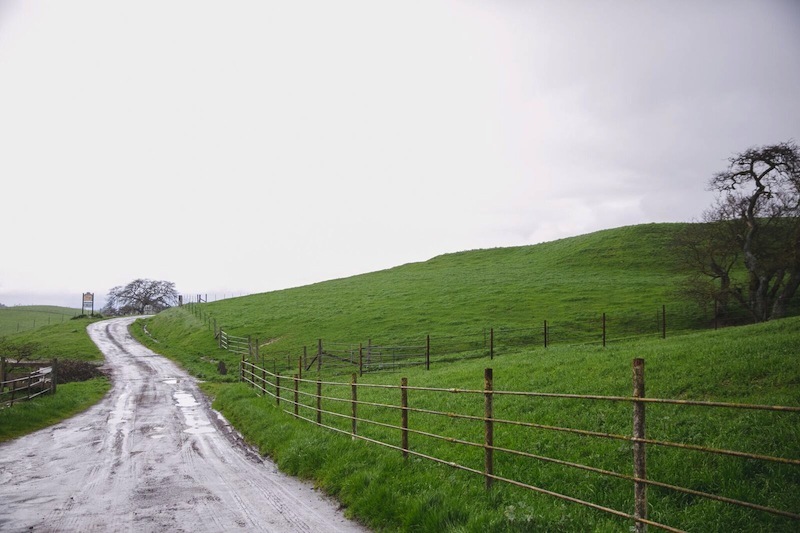A Farmland Mystery.
Why is Sonoma County agricultural land so expensive? I’ve almost accepted that asking this question is like asking, “Why do bad things happen to good people?”. But here’s the thing: If we want to have affordable housing and grow our own food, the high price of land is a problem for Sonoma County. Just ask some old timers. I’m sure they remember what it was like being able to afford living and even farming here.
According to the USDA, the average per acre land cost in California is $10,914. In Sonoma County, farmland ranges from $40,000 to $150,000 per acre. 586,000 acres are zoned for agriculture—close to 60 percent of our total acreage. However, fewer than 3,000 of those acres support fruit, nut, or vegetable farming.
I posed the “why so expensive?” question to Tony Linegar, Sonoma County Agriculture Commissioner, who has faithfully championed the cause of small farmers.
Of the 586,000 acres designated for agriculture, most of it is potentially productive land, according to Linegar. One caveat is that some grazing lands are idle, but he wouldn’t necessarily know about it. Vineyards, at least, are rarely idle for more than one year. The chief reasons for idle land are water deficiency, endangered species concerns, wetlands protection, and slope instability.
Grape growers and vegetable farmers, says Linegar, are in competition for suitable agricultural land, which drives the price upward. That said, it’s hard to believe that out of nearly 600,000 acres of ag land, only 10 to 12 percent, or upwards of 70,000 acres, are available for farming fruits and vegetables. Wine grapes already comprise 59,000 acres of that number.
Yes, there is a scarcity of farmable land, admits Linegar. The problem has only been exacerbated by a trend in which private citizens buy smaller parcels of agriculture land not for farming, but to build residences, which drives land prices up.
Financial yield per acre also drives up the price per acre. Sonoma County fetches a higher price for grapes compared to other counties (excepting Napa), thus a higher price per acre.
So, can we grow more produce for local consumption? Thanks to high land prices and the economics of the farming business, the answer is probably not. This flies in the face of reason when you consider that the average retail grocer sells lots of produce. On average, produce makes up about 10 percent of total grocery sales.
 Grocery store sales in Sonoma County are about $1.6 billion, which means retail sales of produce total around $160 million. Add institutional sales from schools, jails, and hospitals, and the number rises another $30 to 40 million. Local restaurants buy approximately $55 million worth of produce each year. Direct-to-consumer sales are smaller, in comparison, and it’s hard to find a reliable number, but let’s say it’s under $10 million per year. Add it all up and we get close to $260 million sold per year in fruits, vegetables, and nuts. (Ranching and dairy sales aren’t included in this calculus simply because we actually produce a fair share of those food commodities and export to other regions.)
Grocery store sales in Sonoma County are about $1.6 billion, which means retail sales of produce total around $160 million. Add institutional sales from schools, jails, and hospitals, and the number rises another $30 to 40 million. Local restaurants buy approximately $55 million worth of produce each year. Direct-to-consumer sales are smaller, in comparison, and it’s hard to find a reliable number, but let’s say it’s under $10 million per year. Add it all up and we get close to $260 million sold per year in fruits, vegetables, and nuts. (Ranching and dairy sales aren’t included in this calculus simply because we actually produce a fair share of those food commodities and export to other regions.)
If the demand for produce is $260 million per year but we produce less than $18 million of that produce, then clearly there’s a substantial gap—one that could be filled by growing more produce locally. Oh, but wait! Land prices are too high for farmers to acquire land and run a profitable business without raising retail prices, which local consumers seem reluctant to pay.
In the next issue, we’ll talk to folks with their own perspectives on how we might resolve this challenge of high land prices. At the same time, high land prices are not a problem for the small number of folks who profit from the turnover of expensive real estate. It’s only a problem if you want affordable housing for everyone else, along with an affordable local fruit and vegetable supply that allows for a viable living for farmers.
As the Ancient Mariner’s landlubber twin might have proclaimed, “Land, land everywhere, not an acre to farm.”
